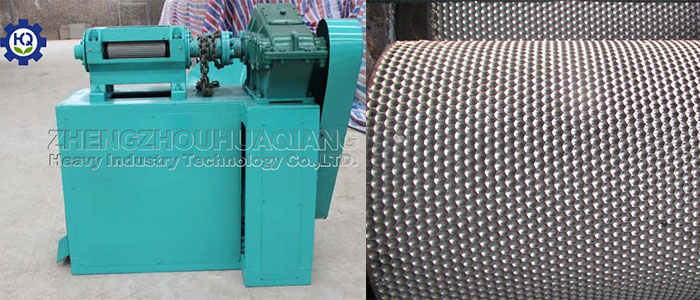
1. Forming Stable Granules to Minimize Physical Loss
Dense Structure: The double roller press granulator compresses raw materials to produce dense, compact fertilizer granules. Compared to powdered fertilizers, these granules are less likely to be blown away by wind. For example, in open fields, powdered fertilizers can easily scatter to non-target areas like field edges due to light breezes, whereas solid granules stay in place, reducing wind-induced loss.
Resistance to Water Washout: During rainfall or irrigation, powdered fertilizers tend to dissolve and wash away with water. Granules produced by the double roller press granulator, however, have better resistance to water flow. Their tightly bonded structure makes it harder for water to break them down and carry away nutrients, thus reducing fertilizer loss through surface runoff.

2. Controlled Nutrient Release to Minimize Chemical Loss
Uniform Encapsulation: The granulation process ensures nutrients are evenly distributed and encapsulated within each granule. This uniform structure allows for more controlled nutrient release in the soil. Unlike unprocessed fertilizers, which may create localized high-concentration spots leading to rapid nutrient loss through chemical reactions, granules release nutrients more steadily.
Slow Release:Some double roller press granulation techniques can produce slow-release fertilizer granules. These granules gradually release nutrients into the soil, extending the fertilizer's effectiveness. Compared to conventional fertilizers, which dissolve and release nutrients too quickly, slow-release granules prevent excessive nutrient release in a short time. This reduces the risk of unused nutrients leaching into deeper soil layers or groundwater, where they become inaccessible to plants.
In summary, the double roller press granulator plays a significant role in reducing fertilizer loss—both physically, by preventing scattering and washout, and chemically, by controlling nutrient release. This improves fertilizer efficiency and supports sustainable agricultural practices.